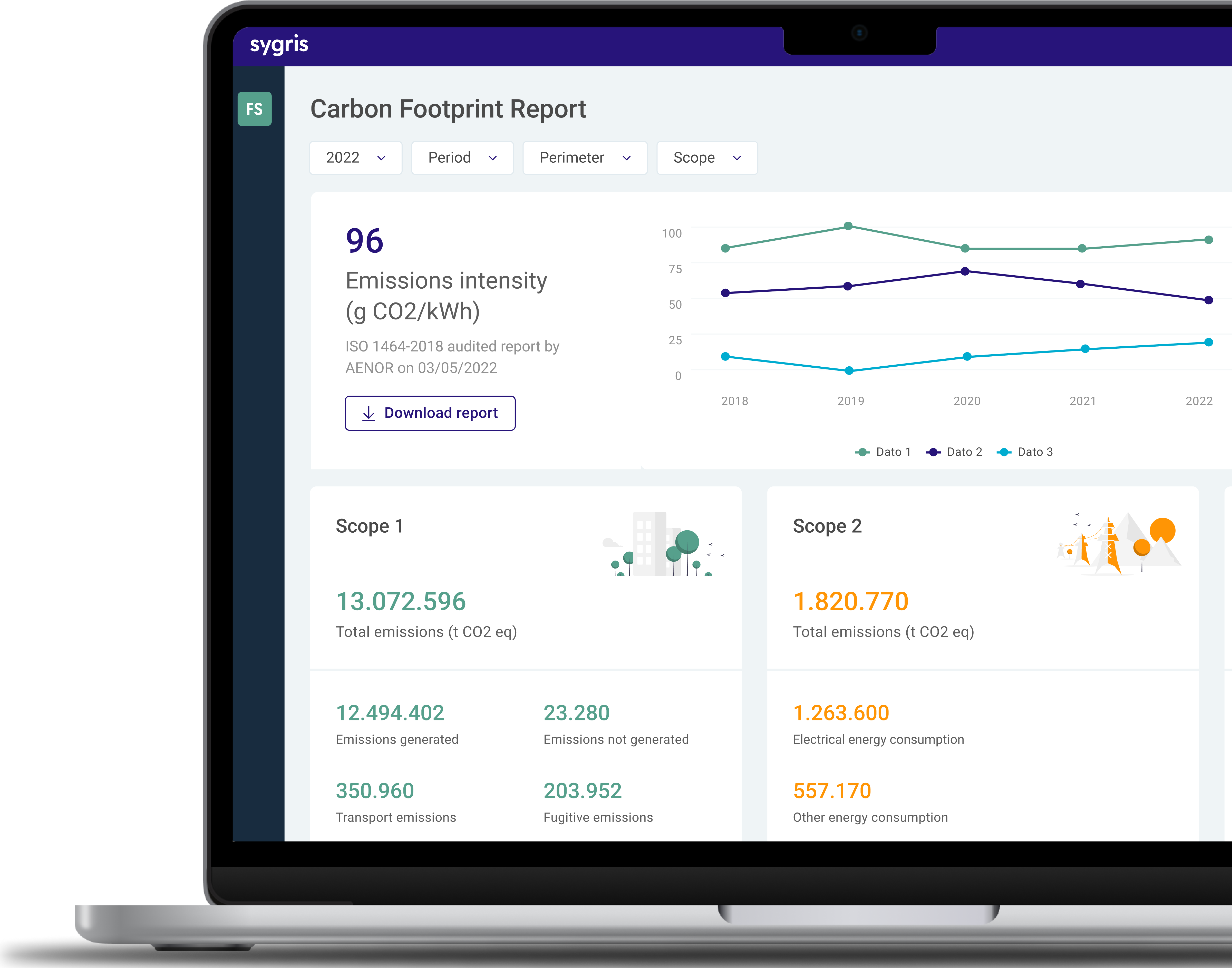Listen to this article
The efficient and sustainable development of production processes continues to take hold, with increasing investment in eco-efficiency. Governments and legislation are firmly pushing for its adoption, and it’s becoming common practice to highlight these efforts. But how fruitful are these initiatives really?
According to Climate Action Tracker, even achieving the most optimistic reduction in greenhouse gases (GHG), the 2°C global warming scenario would still be exceeded by 2030. Considering how to produce fewer emissions in the long term could make a critical difference. In Scopes 1, 2, and 3, climate change mitigation is a risk that “must be managed by limiting exposure to emissions regulation,” whether direct or indirect. Scope 4, however, explores “the business opportunity in products and services that reduce emissions,” explains Jessica Tasman-Jones in her article for Agenda, citing Seb Beloe, Head of Research at WHEB Asset Management.
Although the complete impact, including the emissions produced from the beginning of its manufacturing, must be considered, Scope 4 focuses on the impact of use, highlighting the positive externalities—i.e., emissions that occur outside the product’s life cycle or value chain. Referred to as “avoided emissions,” there are two main types:
Avoided emissions from a product or service that replaces another with a greater impact: For example, online meetings replace commuting to the office, avoiding those emissions.
Avoided emissions because the product or service allows emissions to be reduced elsewhere: For example, low-temperature detergents or fuel-efficient tyres help customers reduce emissions in their own processes.
A positive approach
Scope 4 reporting allows businesses to change the narrative, presenting their efforts through a positive lens. There are two main approaches:
-Consequential approach: This evaluates the overall change in emissions based on a specific decision. By also analysing secondary impacts and unintended consequences, this is a more holistic approach.
-Attributional approach: This compares emissions and absorption rates against a reference product, studying absolute emissions. Given that information and time are limited resources, companies often opt for this approach.
However, the theoretical frameworks for Scope 4 carbon footprinting are not yet fully established. Without a consistent and scientifically sound methodology, there’s a risk of it being used as another tool for greenwashing, a practice that views eco-friendly positioning as a marketing opportunity but fails to implement its principles. This issue has become so widespread that the European Parliament has approved regulations against greenwashing, set to take effect in around two years.
Given the complexity of avoided emissions, technology becomes the ideal ally for Scope 4 reporting, acting as a firewall to prevent it from turning into a mere opportunistic practice for companies. Organisations need platforms and data management systems that allow them to capture and handle vast amounts of information from diverse sources. Moreover, due to the nature of avoided emissions, companies must apply complex algorithms to identify, forecast, and mitigate risks related to Scope 4 emissions.
The essential role of data and technology
A good starting point for collecting credible data is the World Resources Institute’s 2019 guidelines on “Estimating and Reporting Comparative Emissions Impacts of Products,” though it’s not the most comprehensive framework. Last year, G7 Climate, Energy, and Environment Ministers supported the need for a “comparable, reliable, and verifiable” evaluation mechanism for the emission profiles of various products and services, which could “mobilise financial resources to accelerate the deployment of solutions.”
In addition to establishing comparisons of products and services in line with their characteristics, performing a comprehensive Life Cycle Assessment (LCA) and comparing it with that of another company can also help estimate avoided emissions. Given the sheer volume of data and estimates involved with Scope 4, companies need modelling systems that allow them not only to make predictions but also to simulate “what-if” scenarios. It’s no longer just about having the right technology to measure and manage current real emissions, but also having digital tools to carry out relevant simulations.
It’s important to note that for Scope 4 aspirations to be realised, consumer behaviour must change accordingly, with individuals choosing lower-impact products.
The continuous monitoring and updating of data through the implementation of appropriate technologies, the use of advanced modelling techniques in measuring avoided emissions, and external verification and consulting by third parties can increase the credibility of reports. For the time being, due to the difficulty in standardising across sectors, Scope 4 reporting is not considered under the Science-Based Targets initiative (SBTi). Furthermore, it’s indisputable that avoided emissions do not compensate for or reduce the specific emissions under Scopes 1, 2, and 3.
A promising future
Scope 4 has a promising future, offering wide-ranging potential: its holistic view of impact enables companies to make informed decisions, fosters research and technological development, encourages innovation in the design and creation of more sustainable products and services, and helps businesses choose partners and suppliers who share their philosophy, ultimately improving their reputation.
Of course, it’s crucial to consider the resources required in parallel. Without a global benchmark examining how avoided emissions could be integrated into corporate frameworks, it may be difficult to guide necessary investments. As with the reporting itself, there is the risk of both overestimation and underestimation. What is clear, however, is that technology will play a key role in managing these emissions, as it already does for the other three scopes.
For now, Scope 4 carbon footprinting is a matter of commitment, presenting great uncertainties but also numerous possibilities. Technology remains one of the greatest allies for companies in this journey. We need to advocate for a robust, standardised, and tech-enabled system, one that stands up to scrutiny by adopting solid assumptions to enable reliable “sensitivity analysis” (predicting outcomes), with calculations that are verifiable and transparent, and that also considers and discloses Scopes 1, 2, and 3. It’s a challenging task that’s only just begun, but one that needs to be deepened if we are to meet decarbonisation goals.





